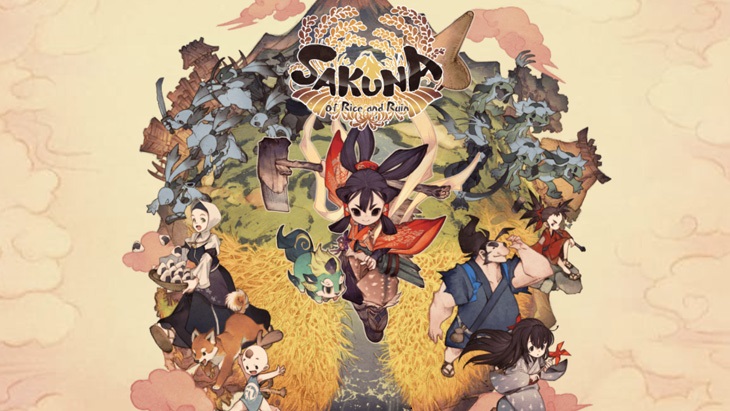
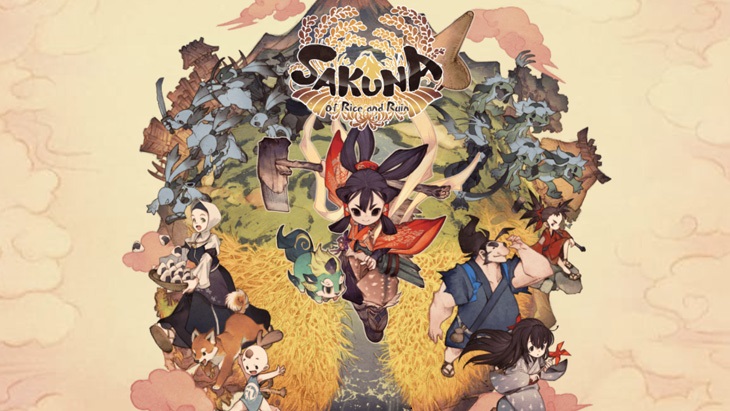
Recent years have been a renaissance for farming sims. Between Stardew Valley, Rune Factory, and Story of Seasons there’s a lot to choose from. Sakuna: Of Rice and Ruin brings a distinctly Japanese aesthetic to a genre that’s belonged to generic rural or fantasy settings.
In addition to being somewhat of a farming sim, Sakuna: Of Rice and Ruin takes a lesson from Rune Factory and diversifies gameplay with combat and platforming segments. Even though it borrows elements from the games of yesteryear, players are in for a wholly unique experience.
Sakuna: Of Rice and Ruin
Developer: Edelweiss
Publisher: XSEED Games
Platforms: Windows PC (Reviewed), Nintendo Switch, PlayStation 4
Release November 10, 2020
Players: 1
Price: $39.99
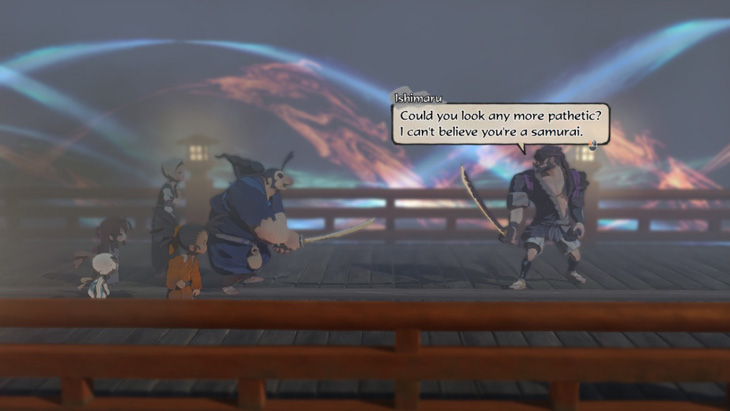
The story follows a group of refugees, Kinta, Yui, Tauemon, Myrthe, and Kaimaru. They have been traveling a long way when happenstance brings them to a bridge connecting the Lowly Realm and the Lofty Realm where the gods dwell.
After being pursued by a bandit, which the wandering goddess Sakuna fights off to amuse herself; the hungry refugees follow her to the palace of Lady Kamuhitsuki. Once there, they sneak around and partake of Sakuna’s offering of rice for Lady Kamuhitsuki. While trying to stop them, Sakuna accidentally sets fire to the storehouse containing all the offerings.
As punishment for this transgression, Lady Kamuhitsuki sentences Sakuna to exile, to find the cause of the evil on the Isle of Demons, and to not return until she has. Now stranded in the Lofty Realm, the mortal refugees are placed in Sakuna’s care and are sent with her to establish a forward camp on the island.
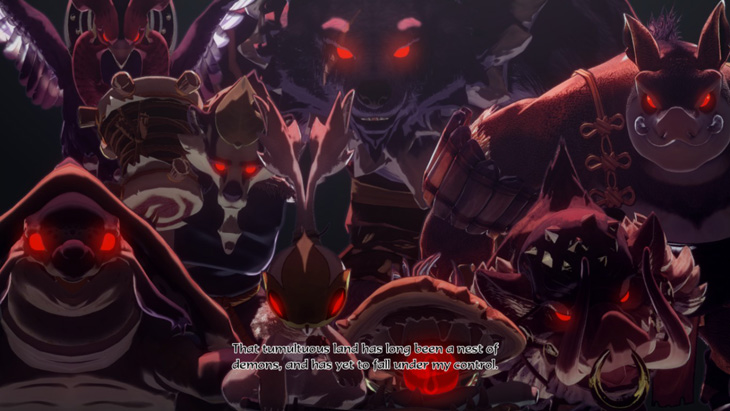
The game takes place between exploring and finding food. More is learned about the cosmology of the Lowly and Lofty Realms, and also about Sakuna’s parentage; as it was they who last defeated the great evil on the island.
It’s a story that’s grand in scope and filled with mysteries that might go unappreciated. Sakuna’s inheritance, and the cause of the island’s evil are all laid out to be discovered through her adventure and the small settlement around the farm continues to grow.
Rather than Japan, the people are from the country of Yanato. This is obviously meant to be a reference to Yamato, the ancient name for Japan and also the name of the Japanese majority ethnic group. As explained later, this seems to be an odd an unnecessary choice.
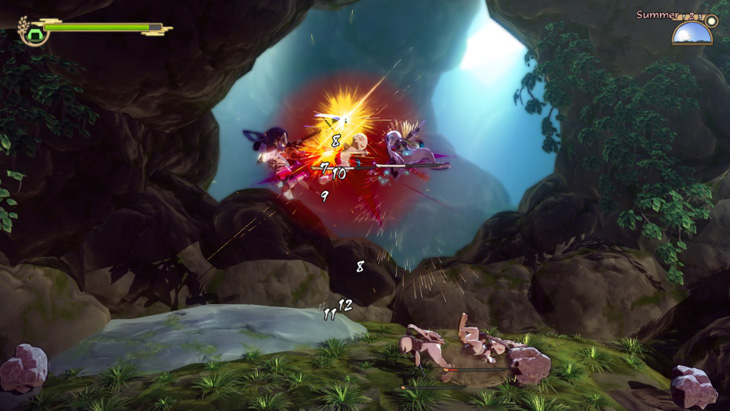
The gameplay takes place in two different formats. There’s gathering and crafting on the farmstead, and “hunting” for materials by exploring stages in the wild. The main gameplay is about progressing through the stages, which take the format of 2D beat’em ups.
But the farming cannot be ignored, and only one crop is grown: rice. Sakuna herself is the daughter of a god of war and goddess of harvest, thus her strength grows permanently with each successful harvest. The quality and quantity of the crop directly affect her stat growth.
Stats can also be improved by crafting new weapons, which requires minerals and other materials found while hunting. Some enemies are weak to certain damage types (for instance boars are resistant to piercing), and the game indicates this weakness by the damage numbers turning red or blue when strong or weak respectively.
Finally, hunting for food is important as eating dinner each night will give special buffs the next day. While they’re temporary, they can make the difference of being able to push the story without forcing you to wait for your yearly rice buff.
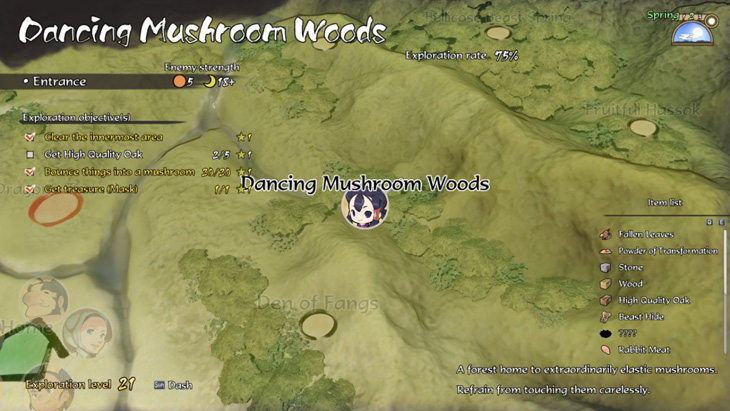
But the hunting becomes an RNG grind quickly. Nodes that players need to get a drop iron for a crucial upgrade will give clay or copper repeatedly. This is especially frustrating with exploration objectives.
New stages are unlocked by a mixture of progressing the story, and completing bonus objectives to increase an exploration level. This objectives can be anything from “defeat 80 rabbit enemies” to “collect salt 6 times” within the stage.
In the latter example you might find salt 5 times, and then nothing the next 5 or 6 times you visit that stage. Luckily it’s not necessary to complete every single exploration objective.
Later, you can assign members of your camp to gather each day. Each member has a specific preference, for instance Myrthe will mostly find food while Kinta will focus on ore and stone.
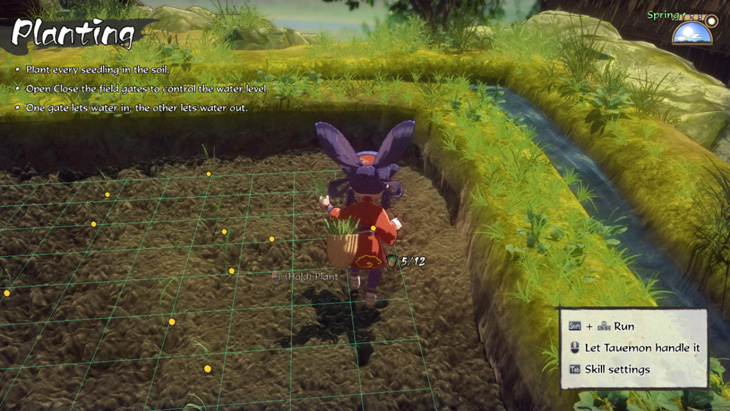
The rice farming is immersive, but the game doesn’t help explain much despite it making an effort to. The game gives feedback constantly during most steps of rice cultivation, but doesn’t explain what to do with that information.
The first year planting rice, the game chastised me for planting them too far apart. Then later, I learned through a scroll that planting them far apart can increase the quality of the rice. The game doesn’t bother to explain what’s too far or not.
Of course that’s when you even are able to plant them closely. I was able to fit 200 plants in my field and still get the “too far apart” message. That’s to say nothing about the other steps.
Water needs to fill the rice paddy to a certain degree, but the game doesn’t explain how much. Early on you’re told that ankle-depth is a good rule of thumb, only to again get criticized. The process of growing rice properly is incredibly trial and error, even when the game makes an effort to explain it.
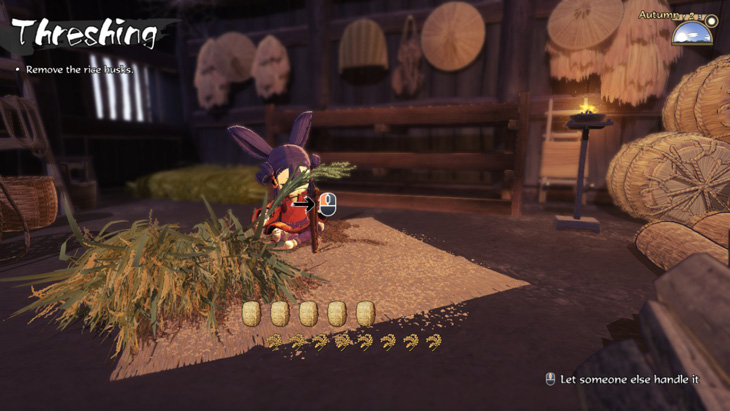
The actual processing of rice is fun and actually a little educational. After harvesting the rice, Sakuna needs to hang it out to dry, thresh it, and then hull it.
Threshing the rice is a little minigame that’s just time consuming. The same is true of hulling the rice, but a choice actually needs to be made between white and brown rice.
Brown rice provides stronger food bonuses when used to cook with. These are temporary but powerful buffs. Fully hulled white rice gives the most permanent stat growth to Sakuna and is a longterm investment.
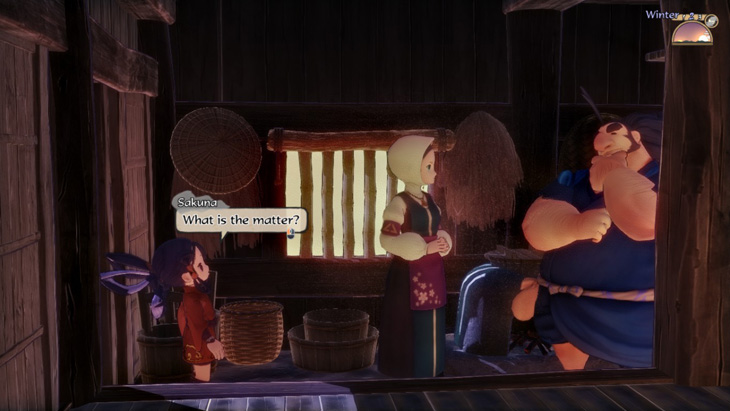
Sakuna: Of Rice and Ruin is a 3D animated game with a somehow nostalgic aesthetic. The graphics and feel of the game are reminiscent of PlayStation 2 titles like Dark Cloud or I-Ninja only with a modern polish.
The graphics are unapologetically cartoonish, and that works just fine. The characters have big heads and in some cases exaggerated features. For instance the samurai-turned-bandit-turned-farmer Tauemon is a big fellow with a goofy nose, and frankly every little detail about him tells the audience about his personality as an affable oaf.
Some care is put into telegraphing the movements of enemies, but not enough. Enemy attack animations are usually too swift to react to and parried by luck, or they shoot projectiles that are nearly invisible in the thick of combat.
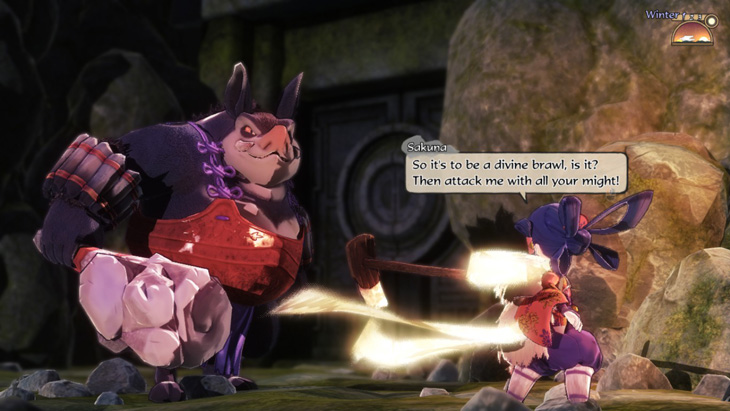
Enemies become stronger at night, and the detail of their eyes glowing red when they get that buff is appreciated. Enemies can also flash red but they don’t feel any different from normal enemies.
The game also does a poor job of showing when an enemy can be hit off the ground. Enemies are given a generous amount of invincibility frames after being knocked down to the ground, and this can completely throw off the pace of combat and leads to getting struck back in turn.
This is extremely noticeable, because the hitstun inflicted upon Sakuna herself is noticeable. The smallest hit on her person will stop most combos, and even a minor enemy that hits for only minute damage can cause you to be open to a powerful attack by another monster.
The music in Sakuna: Of Rice and Ruin is thematic, but pretty standard without any tracks that particularly stand out. But they’re far preferable to silence.
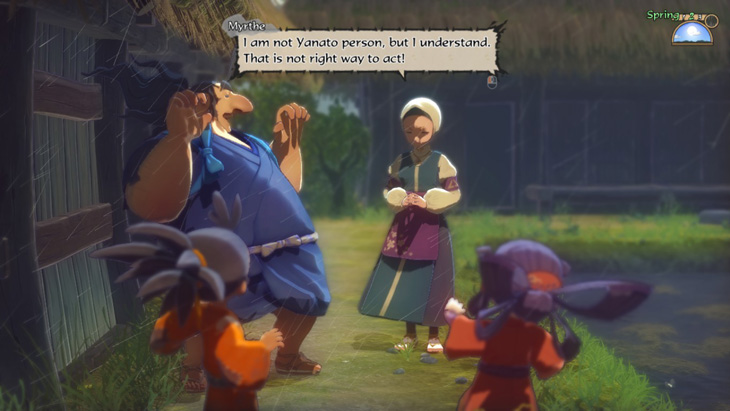
The voice acting is great, but there’s the option to switch to the Japanese voice acting at any time. While I listened to the English voice acting before realizing there was an option, there was nothing wrong with it, and might be easier to listen to for some.
The Japanese audio is more immersive however, as the world of Sakuna: Of Rice and Ruin is heavily inspired by Japan. So much so it’s almost a waste that it has any pretense of being another world.
Myrthe is the exception, with blue eyes and dressed like a nun she’s a foreign missionary in service of the god Formos. While it’s understandable that the setting was changed to not draw any criticism, it’s disappointing all the same.
Further, Myrthe seems strangely inept at English, without much explanation what her native tongue sounds like. Meanwhile in Japanese she speaks more slowly and with forced pronunciation, again returning to the issue of immersion with what language the game is played in.
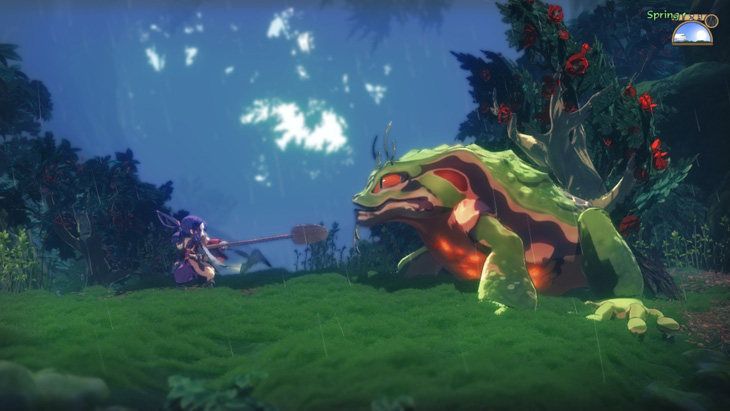
Ultimately, Sakuna: Of Rice and Ruin is a platforming beat’em up before it’s a farming game. While the process of cultivating rice and processing food is a unique element, it’s just a pretense for things we take for granted in other games.
Rather than being locked behind experience or other resources, the game progression being locked behind the rice can make it feel too slow. There are times when bosses or stages are just too difficult without waiting for next year’s harvest.
For those wanting a fun side-scrolling beat’em up, Sakuna: Of Rice and Ruin is a fun and unique game that will provide hours of content. Those wanting a farming and village sim are better served by other franchises like Rune Factory.
Sakuna: Of Rice and Ruin was reviewed on Windows PC using a review code provided by XSEED Games. You can find additional information about Niche Gamer’s review/ethics policy here.




